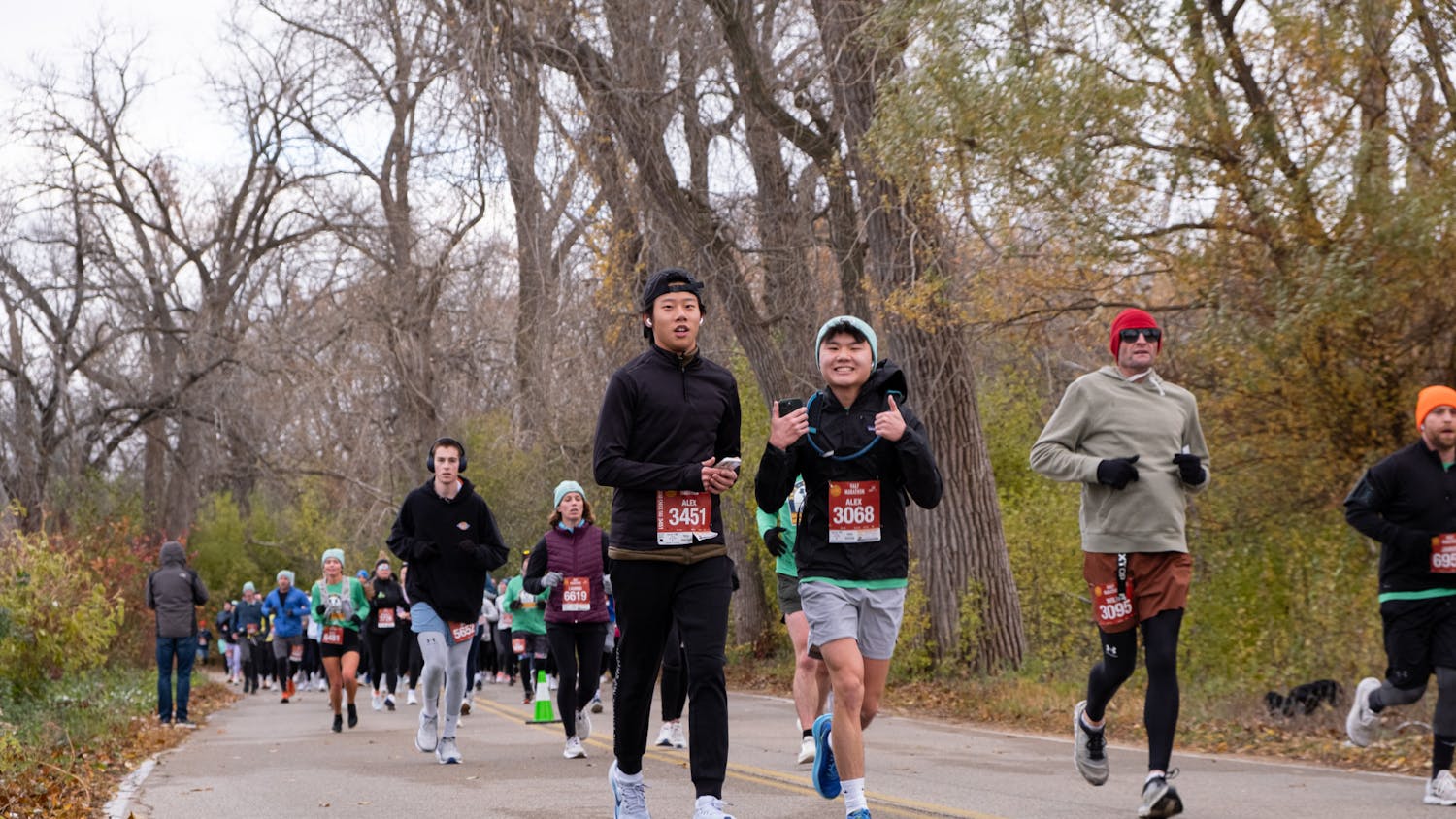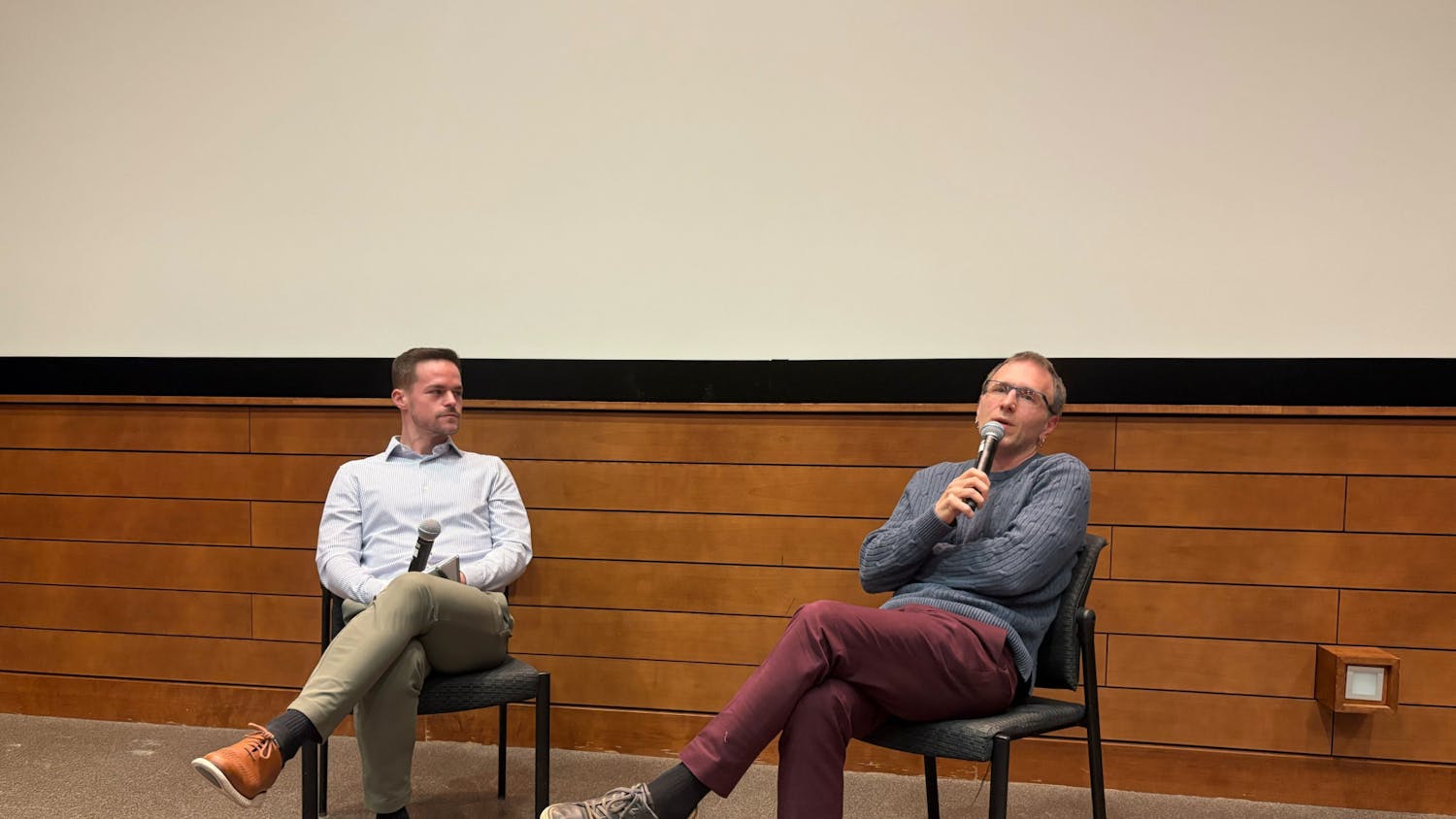Walking down Langdon Street toward Memorial Union, you cannot miss it. It is waiting for you at the end of the block, testing your audacity. The recently turned orange ivy creeps up the sides of its brown stone base. Overgrown bushes frame the uncomfortable shade of crimson red brick. Once you have finally digested the structure, your eyes dart to rusty green letters reading Science Hall directly centered over the entrance. 'Proceed,' it dares.
Once you have, you see that the Victorian exterior greatly contrasts with the harsh lighting and sterile white walls, but it feels just as uninviting as the outside. A cheesy display case with a plastic rat and hanging toy bats inside wait at the top of the staircase reading, 'Is Science Hall Haunted'? It goes on to revealing spooky facts like, 'The morgue was in the basement' and 'strong odors of blood, flesh, and formaldehyde have been reported on occasion in areas that were once dissection labs.' Most probably react with a headshake and a 'pshh,' then move on.
It may sound dumb, but is it true after all? The building seems to have been doomed from the start, beginning with its construction in 1887 after the original structure burned down in 1884. During the work, one person was killed from falling equipment in the basement while two others lost fingers when the pulley used for material transportation broke.
Fortunately, the structure seems much more stable now. According to a plaque near the entrance, the current Science Hall was the first all steel-and-ceramic building in the country. It was also the first fireproof building built on campus.
Originally, all of the science departments were housed in the building together. This included zoology, botany, biology, physics, anatomy, geology, psychology and engineering. But over time, each department began moving out and forming new buildings dedicated to their particular subject.
Campus tour guide Matt Dulak explained anatomy was the last department to leave Science Hall and cadavers anatomy students examined were transported from the basement to upper floors using a pulley system. As time passed, people speculated about whether something peculiar was going on inside the building involving the corpses. A sense of eeriness loomed in the air. '[Science Hall] got its reputation from the mistreatment of the bodies,' Dulak said.
The building certainly exudes a peculiar aura, telling students and faculty that even though the structure was built for the study of science, something unexplainable remains. Even though 1956 was the last year an anatomy dissection was performed in the hall, 'In 1974, someone found a stray human foot in the attic with its skin and one toenail still remaining,' Dulak said.
The supposed haunting of Science Hall is a widespread belief even referred to in Don't Look Behind You in Science Hall, a mystery novel by Samuel Rogers, and First Comics' 'The Phantom of Bascom Hill.' Whether you decide to believe the myths or not, Halloween night'when the moon is full and anything can happen'is not the time to test your courage. While you're 'clopping' down Langdon Street in your disco platforms and look up at the approaching jagged silhouette of Science Hall through your afro wig, do yourself a favor and turn left at the next corner.





